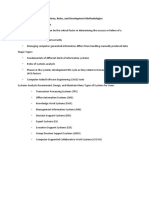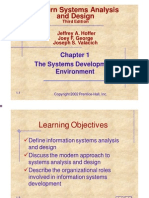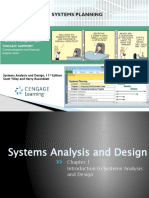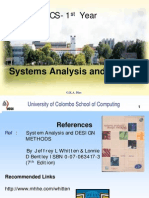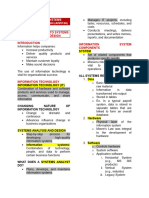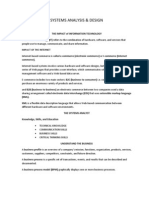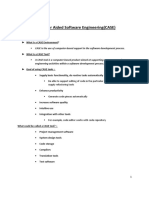0% found this document useful (0 votes)
245 views24 pagesPresentation For SAD Chapter 1
Modeling produces graphical representations of concepts and processes that systems developers can analyze, test, and modify. The document then describes different types of models including business, data, object, network, and process models. It also discusses prototyping, computer-aided systems engineering tools, structured and object-oriented analysis, and the systems development life cycle.
Uploaded by
August ChristopherCopyright
© © All Rights Reserved
We take content rights seriously. If you suspect this is your content, claim it here.
Available Formats
Download as PPT, PDF, TXT or read online on Scribd
0% found this document useful (0 votes)
245 views24 pagesPresentation For SAD Chapter 1
Modeling produces graphical representations of concepts and processes that systems developers can analyze, test, and modify. The document then describes different types of models including business, data, object, network, and process models. It also discusses prototyping, computer-aided systems engineering tools, structured and object-oriented analysis, and the systems development life cycle.
Uploaded by
August ChristopherCopyright
© © All Rights Reserved
We take content rights seriously. If you suspect this is your content, claim it here.
Available Formats
Download as PPT, PDF, TXT or read online on Scribd
/ 24












